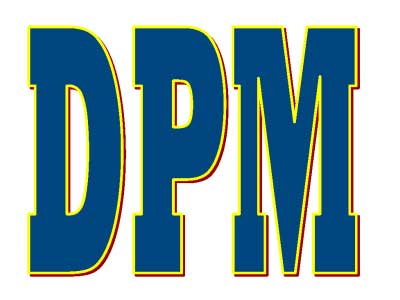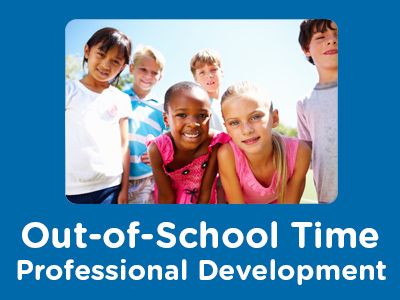 |
Project Management - Basic: Time Management |
1.25 |
This course will teach you how to identify the components of time management, identify the purpose of activity definition and sequencing, and recognize different diagramming techniques. You will also learn how to identify the factors that affect activity duration, and identify techniques for estimating activity duration. |
 |
Change Management: Managing Change |
0.50 |
This course will cover how to encourage creativity in employees and develop a commitment to change in employees. You will also learn how to communicate change effectively, improve listening skills, and control grapevine. |
 |
Reducing Foodborne Illness Risk Factors in Food Service and Retail Establishments |
0.50 |
This course covers different risk factors that are insufficiently controlled in institutions, retail food, and restaurants. Recommendations to help these places control these risk factors are also given. |
 |
Slips, Trips, and Falls |
0.75 |
This course covers slips, trips, and falls in their entirety within the workplace. Being able to identify common causes of slips, trips, and falls helps to protect from a workplace injury. Once those causes are identified, you will learn how to create protection plans and use prevention tools for slip, trip, and fall incidents.
It is just one of many health and safety courses we offer. This course will help you learn about best practices to keep yourself safe and healthy when on the job. |
 |
Cultural Competence for Paraprofessionals |
0.75 |
Culture and cultural elements are essential components of people's identities. Understanding the cultural elements as paraprofessionals allows for a greater appreciation for students and can improve relationships. Cultural elements may include race and ethnicity, gender, and socio-economic status. These elements of culture are not separate from the larger cultural context in which we live and work, especially as paraprofessionals. It is important to recognize that many culturally and linguistically diverse families have specific customs and traditions that may not necessarily be connected to a particular cultural group. By understanding cultural competence, paraprofessionals can provide responsive instruction and support to students from all backgrounds. |
 |
Preventing Slips, Trips and Falls: A Training Program for Small Business |
0.67 |
The Preventing Slips, Trips and Falls course focuses on helping small business owners and their employees identify, evaluate and control the hazards in their workplaces that may cause slips, trips and falls. Designed to increase and improve participants' knowledge, skills and access to valuable resources, this course will assist them in establishing systems that can help them prevent slips, trips and falls. Participants will learn how to prevent, recognize, evaluate, and control slip, trip and fall hazards, as well as develop their own learning goals and action plans. |
 |
Budgeting: Operating Budgets |
1.00 |
An operating budget is a projection of the entire income statement of a company, or department. Operating budgets manage the operations of a company or department. They include the expenses associated with manufacturing, selling, and distributing products. Operating budgets also help to administer the daily functioning of the company. They project the expenses a company will incur in its manufacturing facilities, as well as the revenue that it will generate. |
 |
Managing Performance: Legal Appraisals |
0.84 |
In this course you will learn to: identify legal appraisals and responsibilities in relation to laws enforced by the EEOC, and identify risks of legal challenges and the importance of maintaining positive communication. |
 |
Call Center: Telephone Service Fundamentals |
0.75 |
This course will focus on how to analyze the importance of good telephone service and develop a positive attitude and interpersonal skills. You will also learn how to greet customers. |
 |
Project-Based Learning for Teachers |
1.75 |
This course is designed to provide educators with the knowledge, skills, and tools to implement project-based learning (PBL) in their classrooms. The advantages of using PBL along with some ways to zero in on selecting topics and projects will be discussed. This course will help you develop new knowledge about using project-based learning effectively. |
 |
Effective Communication with Children and Youth |
2.00 |
We are constantly communicating with the children and youth in our program through our words and actions. It's important for program staff to think critically about their communication skills and habits in order to communicate effectively. During this course, participants will learn about effective and dynamic communication tools, strategies to check for understanding, and activities that engage children and youth in communication. |
 |
Cultural Competence: Diversity, Identity, and Engagement |
2.00 |
Many programs engage children, youth, families, and staff from diverse cultural backgrounds. In order to best serve their community, out-of-school time program staff need to develop the vocabulary and skills to engage with people from different cultures. During this course, participants will explore how culture can impact and shape individuals, examine their own cultural identities and how these identities may impact their interactions with others, and levels of engagement with diverse groups. |
 |
Ground Cover Fires |
1.50 |
This course is an introductory level course that introduces the basic concepts of fighting fires that involve natural ground cover. This course describes fire behaviors associated with ground cover fires, identifies the types of equipment as well as methods used to combat these fires. The lesson also identifies specific hazards associated with ground cover fires and describes methods for mitigating the risk of those hazards. |
 |
NIEHS Driving Hazard Awareness |
0.17 |
This course covers the hazards of driving and what you can do as a driver to avoid these hazards. When you are on the road, there are a variety of factors that go into your overall safety. Being aware of other drivers and being conscious of your own driving increases your overall safety. |
 |
Budgeting: Reviewing Budgets |
1.00 |
A typical budget contains information for a single year and is updated and revised periodically. Each company creates a budget that fits its unique needs. A budget can be used for many purposes, but its primary functions should be to support strategic goals and to help identify when actual results deviate from what was predicted. |
 |
Business Accounting: Stockholders' Equity |
1.50 |
This course will cover how to identify various types of stocks and calculate the value of a corporation’s stock as well as how to use financial ratios to calculate book value and market value per share. You will also learn how to identify the components of stockholders’ equity and report stockholders’ equity on financial statements. |
 |
Cultural Diversity in School Settings |
1.00 |
This course contains definitions of diversity, equity, and inclusion (DEI) and the role DEI plays in the school setting. Embracing diversity, equity, and inclusion benefits everyone within a K-12 institution: faculty, staff, students, and families.
Learners will reflect on the different elements of their own identity and how that impacts their perception of others. This course will also discuss the role of bias in the school setting. |
 |
GED: Science - Unit 1: Science Practices |
1.00 |
Welcome to Unit 1: Science Practices. Science practices describe the ways we collect, process, and analyze information. Each question on the science test will incorporate science practice within the content area being tested. In this unit, we'll explore some of those science practices. We'll define scientific method, describe variables, and learn about sampling techniques. We'll also explore some of the ways scientists represent and analyze the data they collect. |
 |
Leading with Head and Heart |
2.00 |
Those in leadership positions have a responsibility to both lead and manage.During this course, participants will understand the differences between the leadership and management, and the steps we can take to cultivate both. Participants will explore how leaders create safe, supportive environments by modeling self-awareness, interpersonal skills and growth mindset in how we lead and manage. |
 |
Communicating with Families |
2.00 |
Communication and positive relationships with families improve when program staff recognize family members as partners. Staff can benefit from acknowledging their feelings about families and identifying how these feelings help or hinder working with families. This course provides participants the opportunity to identify their attitudes towards families, consider how their attitudes can enhance or detract from their ability to develop positive relationships with families, and examine how a program’s overall environment supports strong staff-family communication. |
 |
Instructional Planning for Paraprofessionals |
0.50 |
This course covers the instructional responsibilities of a paraprofessional in the classroom. It is just one of many paraprofessional courses we offer. This course will help you understand what your role as a paraprofessional is in supporting students through instruction and how to support teaching and learning. |
 |
Employee Performance: Communication (Instructor Guide) |
1.00 |
Communication is effective when a listener clearly understands a speaker’s message. Good communication fosters a productive exchange of ideas while minimizing the possibility of confusion or misunderstanding.
When trying to communicate with a difficult employee, you must be willing to work with that person to correct the problematic behavior. Openly discussing the behavior can help you find a mutually acceptable solution.
In this course you will learn to: communicate clearly and effectively by using verbal and nonverbal communication, and improve your listening skills, and communicate with difficult supervisors and coworkers, take a proactive approach when dealing with difficult employees, and identify types of employee dismissals.
This Instructor's Edition of this course includes notes and suggestions to assist you in presenting the material, whether in an in-person classroom setting, or as an instructor-led online or distance-learning course. It also provides you with the answers to questions found in mid-lesson activities, as well as in the quiz that concludes the course. |
 |
Project Management Essentials: Project Scheduling |
1.25 |
This course will focus on how to develop a project schedule by using CPM, PERT, project network diagrams, arrow charting, and Gantt charts and how to dentify the benefits of CPM and PERT, the critical path, and the methods of duration compression. |
 |
Effective Prehospital Patient Handoffs Between Providers |
0.50 |
Effective Prehospital Patient Handoffs Between Providers was designed to provide a common process for reporting patient information during the prehospital care process. Communication of the patient's prehospital care from all level of providers is essential in ensuring the continuation of care in a unified and effective manner and to help provide a seamless transition in their care. This course expands on the idea of effective patient handoffs to the field providers that often transfer patients between various levels of care from first-responder through advanced paramedics. Very often, initial observations of those initial responders are unavailable to subsequent responders - either because the patient has been moved, or the scene itself has been altered. Without an effective process to communicate these details, important information can and will be lost. |
 |
Guiding School-Age Children in Groups: MAPs and DDADA |
1.00 |
When large numbers of children are involved in the program, it is challenging to create and deliver school-age program activities that can meet the needs of all children. The key to success is taking a systematic approach to program planning. It is important for staff to understand how to select appropriate activity options, and use effective management strategies that make it possible to offer a balanced variety of simultaneous activity options. This understanding will help staff plan and implement a program that effectively supports, nurtures, and guides individual differences, and fosters positive interaction among children in groups. |


























